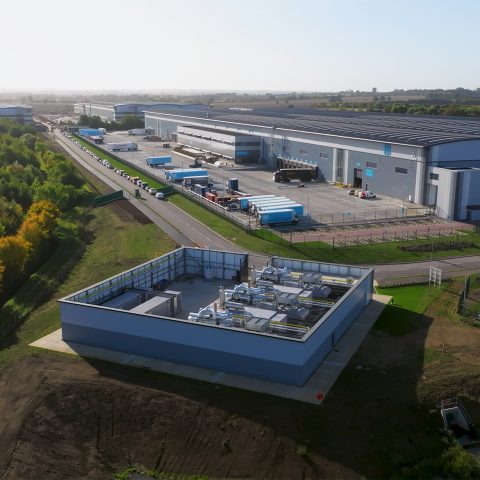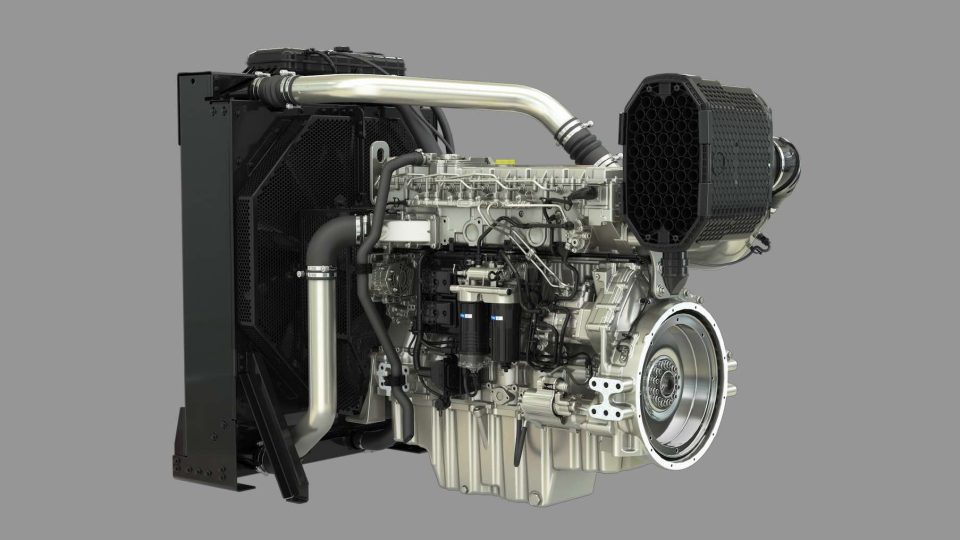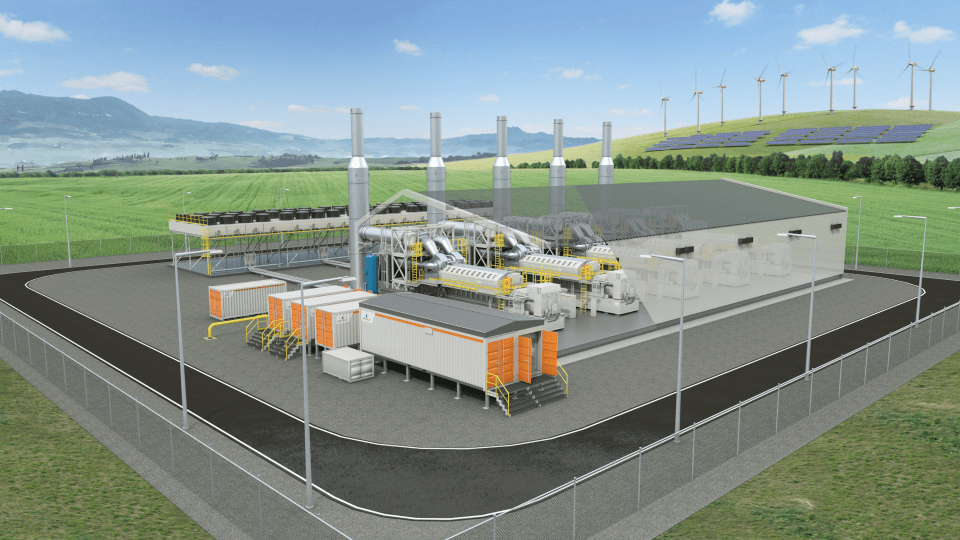Rolls-Royce selected as microgrid provider for UK logistics park
Rolls-Royce has been selected by energy services developer BasePower to supply three mtu Combined Heat & Power (CHP) plants, two mtu EnergyPack battery containers and two mtu Series 4000 standby generators, along with complete microgrid controls, for a new 2MW energy centre at Symmetry Park, Biggleswade in the United Kingdom.

Rolls-Royce has been selected by energy services developer BasePower to supply three mtu Combined Heat & Power (CHP) plants, two mtu EnergyPack battery containers and two mtu Series 4000 standby generators, along with complete microgrid controls, for a new 2MW energy centre at Symmetry Park, Biggleswade in the United Kingdom.
The new energy centre is the result of a joint enterprise project between Tritax Symmetry and BasePower and will provide clients at the Logistics Park in Biggleswade with reliable, greener, cheaper power solutions. It will augment the grid with renewable and resilient power generation from several sources, including rooftop solar photovoltaics (PV), batteries and a Combined Heat and Power (CHP) plant. The cost effective and efficient solution is the result of extensive collaboration with BasePower, from conceptual design through to implementation.
Tom Leeming, Development Director at Tritax Symmetry, commented: “One of the priorities our clients have when deciding on a new location for their business is power. As a responsible developer, we realised the need to supplement and enhance the national grid supply to ensure continual, robust, and greener alternative power supply for our occupiers. The installation of energy centres on our parks will provide tenants at the site with greater resilience, more competitive energy, and a pathway to fully net zero carbon in occupation. We estimate a saving of between five and 10 percent on grid energy bills and the energy centres are also upgradeable if extra power is needed, such as by adding additional PV.”
Andreas Görtz, President of Sustainable Power Solutions, Rolls-Royce, said: “We are thrilled to be the power solution provider of choice for this sustainable project. The mtu microgrid for the Biggleswade energy centre is a great example of our transformation into an integrated sustainable solutions provider and will undoubtedly be a blueprint for further microgrid projects all over the world. This project serves as another example of how we are contributing to the net zero energy transition. It is in line with our sustainability program, which is realigning the product portfolio of Power Systems towards more sustainable fuels and new technologies that can further reduce greenhouse gas emissions.”
Two mtu QL EnergyPack battery storage systems with 2.3 MWh capacity in total will store electric energy to provide a fast, flexible, and carbon-free response to varying load demands and will act as the sole source of power in times of low demand. Three mtu CHP systems (8V4000 GS) will provide the main power source with 3 MW power in total, plus offer the added benefit of being future-ready, as they are capable of being converted to hydrogen power. Two backup 1 MW mtu 16V2000 DS1250 generator sets will ensure power security in the event of an emergency.
All the mtu systems and onsite solar photovoltaics are coordinated by a smart mtu microgrid control system consisting of two microgrid controllers operating in duty and standby mode for added resilience. The system handles both the dynamic load and power needs for optimal commercial and technical efficiency. The energy centre operates in parallel with, and supplemental to, the grid supply and can also operate off-grid, if required. With the mtu smart controls, the microgrid provides energy using the best source or combination of sources at any given time.In addition, the site will be supported with ongoing maintenance and system services by a UK based team to ensure operational excellence.








